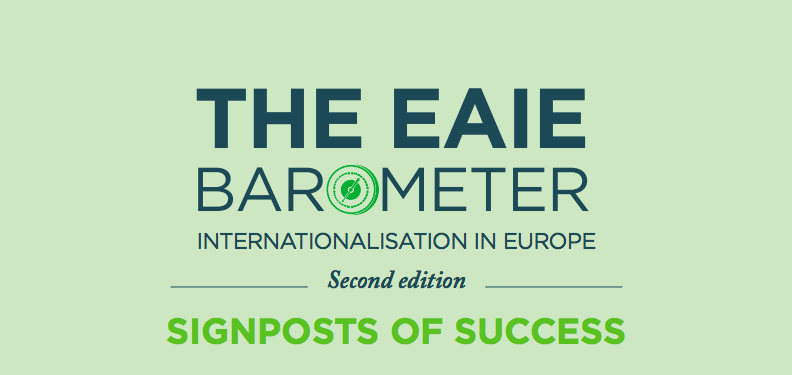Building on 2018’s second edition of EAIE Barometer – the largest dataset on the state of internationalisation in Europe – the EAIE has launched its next report in the series in an effort to highlight what ‘successful’ internationalisation looks like in European higher education.
News and business analysis for Professionals in International Education
Have some pie!
EAIE identifies indicators of successful internationalisation
 The data suggested nine signposts shared by the most optimistic HEIs on the current and future state of internationalisation. Image: EAIE
The data suggested nine signposts shared by the most optimistic HEIs on the current and future state of internationalisation. Image: EAIE Compiled using 2,317 survey responses from professionals working on internationalisation at HEIs in 45 countries, the ‘Signposts of Success’ report examined the organisational and strategic commonalities shared by the most optimistic institutions.
“The institutions that mainstream their efforts seem to be the most successful”
The highest numbers of respondents came from the Netherlands (9%), Germany (7%), Finland (6%) and the UK (5%), with other countries represented in the survey making up 4% or less.
Respondents were asked questions related to notions of ‘success’, namely the progress their institution had made over the past three years; the perceived level of internationalisation compared to other HEIs in their country; and how optimistic they were about the future of internationalisation at their institution.
From the responses, the authors identified nine key factors common to institutions that consider their performance successful, ranging from the alignment of internationalisation with the university’s academic mission, to funding, training, and regular strategy evaluation.
Overall, the report explained, successful delivery of internationalisation activities were “connected to coordinated and mainstreamed efforts across the institution”.
“It is quite illuminating really,” one of the report’s authors and EAIE Senior Knowledge officer Ross Hudson told The PIE News.
“The institutions that mainstream their efforts seem to be the most successful; the level of internationalisation they have is high, they are positive about the future and they are achieving their goals.”
Moreover, Hudson explained, the data indicated that internationalisation thrives not only when mainstreamed through the institution but also when acted upon collaboratively.
“In addition to having a collaborative structure in place where dedicated staff work on internationalisation, offering staff training on internationalisation… seems to bring about a higher feeling of accomplishment,” he said.
The report also indicated that pursuing internationalisation for reasons closely aligned with the traditional missions of the university – teaching and research – was found to coincide with staff confidence in the future of internationalisation at their institution.
Conversely, staff who perceive that internationalisation was focused on achieving financial benefits were more likely to see their institution as below average in their country (19%) compared to 14% in the total sample.
“It is perhaps not surprising that respondents who report that their institution internationalises primarily for financial benefits – something which is often perceived as a less desired goal in academic environments – are less positive about the future, and feel their institution is below average in internationalisation,” the report read.
In terms of internationalisation strategy, the report indicated that having set targets, adequate resources and a regular evaluation also stood out as factors enhancing success.
It also found that tying activities such as staff training or quality assurance efforts to the priorities outlined in the strategy could “bolster progress”.
“The analysis shows that an evaluation culture and a focus on quality assurance further increase the likelihood that internationalisation is perceived to deliver positive results,” the authors explained.
“It is important to have an alliance and a strategic approach to internationalisation”
“In this light, the fact that just 53% of respondents indicate that their institution has a formal internal quality assurance process in place is perhaps worrying.”
Overall, the vast majority of respondents (81%) were positive about the future of internationalisation at their HEI.
However, author and Policy officer at the EAIE Anna-Malin Sandström added, when striving for future success, it is important to note that taking one of the nine key factors in isolation will not much of an impact.
“It is important to have an alliance and a strategic approach to internationalisation, because one factor by itself will not be a ‘quick fix’,” she told The PIE.
Still looking? Find by category:



Much of this very interesting analysis is about factors that determine success rather than data that measures success. Hard data may be hard to get. One measure is financial impact which is seen, however, as a negative which might reflect more on the philosophy of the writer. On a higher level, is there any discussion on the political impact of internationalisation in strengthening the concept of Europe?